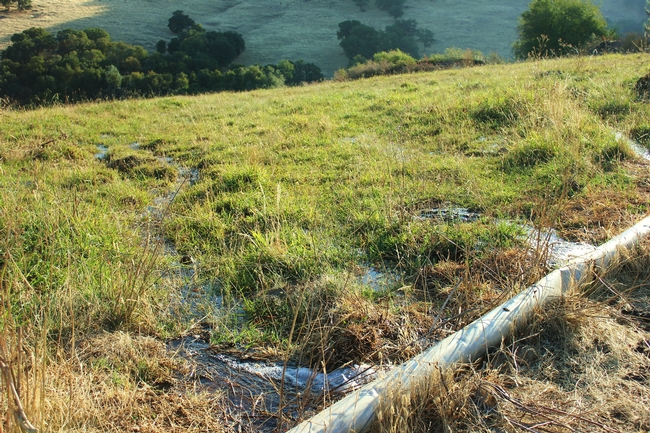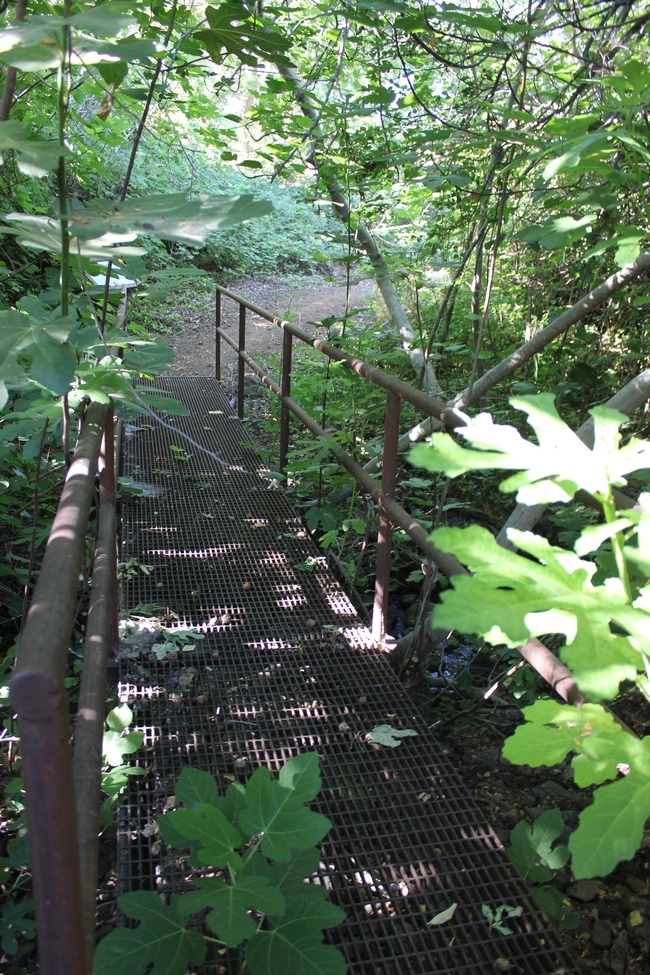- Contributors: Madison Easley, Larry Forero and Nikolai Schweitzer

For this project, researchers and staff regularly monitor and assess four factors associated with the production of foothill flood irrigated pasture utilizing pipe and ditch delivery methods. These factors include the amount of water applied to the pasture, the amount of water run-off, the effectiveness of irrigation, and the production of the pasture (measured in biomass and AUM harvest).

Preliminary findings indicate that the interval between irrigations could be lengthened in the fall as the days shorten and become cooler. Fewer applications result in less water being used, saving ranchers time, money, and stress. The monitoring for this project will continue through the summer and fall, so check back for additional updates.
With July being “Smart Irrigation Month” this is the time for ranchers to explore opportunities for more efficient irrigation methods using resources like those offered in this post.

- Author: Megan G Osbourn

Along the stream is the Riparian area where you will find many plants that have roots in the water or very damp soil. Even in the dry summer months, these plants usually grow tall and jungle-like since they have plenty of water. These Riparian plants are important because they help stabilize soil and filter impurities from the water in addition to providing critical habitat for a variety of wildlife. Holes in large rocks can also be found near the water where the Native Americans who once lived in the Sierra Foothills would grind acorns into flour.

Finally, hikers will come upon a convenient steel foot bridge that spans over the entire marsh area. The soil in this small basin is always saturated due to contact with the water table. Here you will find specialized plants that grow well when their roots are always wet such as cattails, reeds, forbs and shrubs. This vegetation provides nesting habitat for a rare bird species called the black rail that was recently discovered to be living in the foothills.

- Author: Ben Granholm
Epizootic bovine abortion (EBA), also referred to as foothill abortion, is one of the most serious cattle diseases in the Western United States. UC researchers, Professor Jeff Stott and Specialist Myra Blanchard from the UC Davis School of Veterinary Medicine have made major headway in developing a vaccine for this disease and currently are mid-way through a multi-year field trial examining vaccine field efficacy. This disease is carried by ticks and is present in many foothill regions making SFREC a natural outdoor lab to evaluate field efficacy.
Last Wednesday researchers checked pregnancy status and condition on heifers assigned to the study. By August, heifers will be moved to irrigated pasture where SFERC staff can monitor animals closely for how the vaccine improves calving success and calf health. To read more about the efforts of SFREC researchers to combat foothill abortion, click here.
- Author: Megan G Osbourn

Adaptation to changing weather and economic conditions is fundamental to farm and ranch survival but this year's drought is pushing variable adaptation strategies to their limit. The international community is closely watching how this dire situation is progressing in California and on June 19th the Canadian Broadcast Company (CBC) visited the Sierra Foothill Research & Extension Center (SFREC) to document how ranchers are adapting to these extreme events and the implications these events have on agriculture and ultimately food production worldwide. Filming involved capturing interviews of three ranchers to explore their perspectives as well as a tour of SFREC to examine potential adaptation strategies to drought.
Joe Fischer, cattle rancher and President of the Placer County Farm Bureau, told CBC the economic impacts and emotional toll of the drought on ranching families have forced ranchers to rethink their management strategies and find innovative ways to manage the land. “Ranchers tend to be profitable if the land is productive,” Fischer said. “We have to look ahead five to ten years or more and try to be as conservative as possible with our stocking rates. Under these conditions, we have a much smaller margin for error so we have to be more precise than ever with our management strategies.”

SFREC Director Jeremy James and Livestock and Natural resource Advisor Glenn Nader used SFERC as an opportunity to demonstrate how intensive grazing management, agricultural by-products and culling strategies could be deployed to mitigate some of the impacts of drought. Many producers with limited feed sources are utilizing agricultural by-products that are available in their area in order to sustain the nutritional requirements of their livestock. Nader, pointed out that almond hulls are high in energy and have limited protein, which allows cows to more efficiently digest hay and can limit the quantity of hay they need to consume. Nader warned that the almond hulls fed must contain a low level of almond shell, in order to avoid problems with rumen digestibility. Rice straw and rice bran are more local agricultural by-products that, under the right conditions, have been utilized as dietary supplements for cattle.

To view the proceedings from the January 29th SFREC Drought Workshop, click here.
- Contributor: Elise Gornish
4009- Effects of defoliation and habitat on medusahead demography
The winter annual grass Taeniatherum caput-medusae (L.) Nevski, commonly known as medusahead, is one of the most dominant invasive range species in the West. Despite a broad understanding of medusahead impacts we have limited understanding of how environmental conditions and management strategies influence medusahead population dynamics. This insight is key if we are to ultimately forecast changes in medusahead abundance and spread under various conditions. Using periodic matrix models, we are investigating how density and habitat type (grassland vs. oak woodland) and defoliation influence population dynamics. First year results show strong density dependence ranging from positive to negative depending on time of year with oak woodland habitat suppressing medusahead population growth much more than open grassland.
Check out the video for more!





